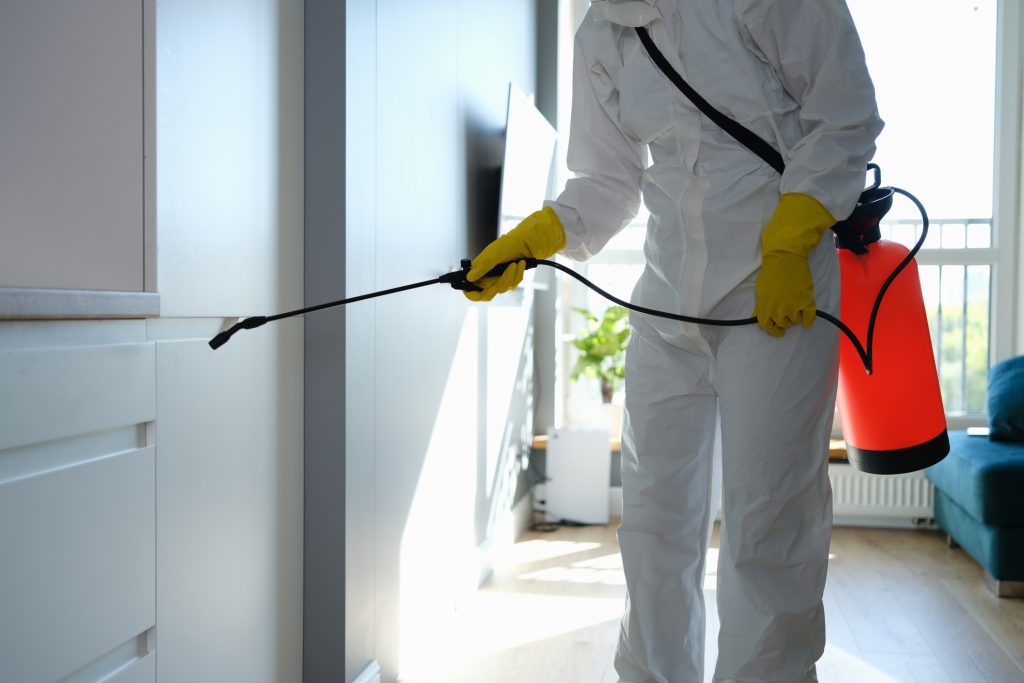Say goodbye to pests with the best Pest Control available now.
Eco-Friendly Parasite Control Approaches for Taking Care Of Wildlife in Urban Locations
Urban locations commonly discover themselves at the intersection of human activity and wildlife, leading to special challenges in insect monitoring. Environmentally friendly methods highlight sustainable conjunction, using methods such as habitat adjustment and natural repellents to reduce human-wildlife disputes. These approaches not just safeguard the environment but also improve community engagement in wildlife monitoring. As metropolitan populaces remain to grow, understanding the characteristics of wildlife communications ends up being significantly critical. What cutting-edge approaches can be implemented to make certain both ecological balance and city safety? Exploring this inquiry reveals an engaging landscape of potential remedies.
Comprehending Urban Wildlife Characteristics
Comprehending Urban Wildlife Characteristics is necessary for establishing effective and environmentally friendly pest control approaches. Urban areas are increasingly coming to be habitats for numerous wildlife varieties, driven by aspects such as habitat fragmentation, food schedule, and human encroachment. Identifying these dynamics enables a nuanced method to pest management that lines up with eco-friendly concepts.
Urban wildlife often consists of species such as raccoons, squirrels, and birds, which adjust to city atmospheres, finding particular niches in eco-friendly areas, parks, and also domestic locations. Their existence can cause problems with humans, especially when they manipulate personnels for food and sanctuary. Recognizing the habits and environmental functions of these varieties informs techniques that lessen negative communications while advertising biodiversity.
In addition, recognizing the interdependencies within urban environments helps in identifying important locations for habitat preservation and repair. This expertise adds to the development of integrated insect monitoring (IPM) techniques that think about the environmental equilibrium, therefore decreasing reliance on hazardous chemicals. By fostering coexistence between people and metropolitan wildlife, cities can produce much healthier atmospheres that profit both citizens and neighborhood environments, leading the means for lasting city living.
All-natural Repellents and Deterrents
All-natural repellents and deterrents use a lasting option to traditional bug control techniques by using the power of nature to maintain undesirable types at bay. These eco-friendly solutions generally utilize plant-based ingredients, essential oils, and various other naturally occurring materials that hinder parasites without hurting the atmosphere.
One effective all-natural repellent is peppermint oil, which is recognized to push back rodents and insects. Its solid aroma is unpleasant to many insects, making it a popular choice for urban setups. Vinegar and citrus peels can serve as deterrents, as their solid odors are usually uninviting to different wildlife.
In addition, diatomaceous earth is an all-natural powder that can be spread out in areas vulnerable to insect task, successfully dehydrating and hindering bugs without positioning threats to non-target types. Furthermore, garlic sprays and neem oil are identified for their capability to repel a variety of parasites, consisting of both insects and bigger wild animals.
Carrying out these all-natural repellents not only lowers reliance on chemical pesticides however also advertises a much healthier urban ecological community, fostering a much more well balanced coexistence between people and wild animals. By utilizing these techniques, city areas can efficiently take care of bug populaces while minimizing ecological impact.
Environment Alteration Methods
Reliable habitat adjustment methods play a crucial function in lasting parasite monitoring by altering the atmosphere to make it less for pest problems. By understanding the ecological dynamics of metropolitan areas, property owners can execute tactical adjustments that prevent bugs while advertising biodiversity.
(Barn Fly Control)One primary method entails maintaining appropriate hygiene. This consists of regular waste removal, safeguarding garbage can, and getting rid of standing water to lower reproducing sites for insects and rats. In addition, landscape design practices such as choosing indigenous plants can enhance ecological balance, supplying environments for advantageous organisms while lessening sources for parasites.
An additional vital technique is to secure entrance points in buildings. Evaluating and fixing splits in structures, wall surfaces, and windows can dramatically reduce parasite accessibility. Creating physical obstacles, such as fences or plant buffers, can inhibit wild animals movement right into human-inhabited locations.
Integrated Insect Management Practices
Structure upon habitat modification strategies, integrated pest monitoring (IPM) practices offer an all natural method to controlling parasite populations while decreasing environmental impact. IPM incorporates numerous techniques, consisting of organic, cultural, mechanical, and chemical controls, to achieve effective bug management.
Organic control involves the intro of natural killers or parasites to minimize pest populaces. Cultural methods, such as plant rotation and hygiene, disrupt pest life process and diminish their environments - Pest control service. Mechanical controls, like traps and obstacles, provide instant alleviation from insect stress without chemical intervention
Chemical controls are used as a last hotel, focusing on targeted applications that restrict harm to non-target types and the setting. The selection of eco-friendly pesticides, when required, is indispensable to the IPM framework. Furthermore, monitoring insect populaces and analyzing potential damage assists educate decision-making, ensuring that interventions are prompt and reliable.
Area Involvement and Education

(Mouse Control)Workshops and educational sessions can furnish residents with understanding regarding indigenous species, habitat conservation, and efficient non-toxic bug monitoring techniques. Partnership with institutions, neighborhood companies, and federal government agencies even more improves educational outreach, guaranteeing that vital details gets to varied audiences.
In addition, community-led campaigns, such as neighborhood clean-up days and habitat remediation projects, not only promote biodiversity but likewise reinforce community ties. Pest control service. By motivating homeowners to share their experiences and monitorings, neighborhoods can establish targeted strategies that deal with specific regional insect image source concerns
Integrating comments from citizens into pest monitoring plans enables a more responsive and adaptive method to wildlife challenges. Inevitably, notified and engaged communities are essential to attaining long-lasting success in environmentally friendly parasite control, causing much healthier metropolitan atmospheres that value both human and eco-friendly requirements.

Conclusion
In final thought, environmentally friendly pest control approaches offer sustainable services for taking care of metropolitan wild animals. By focusing on habitat modification, making use of natural repellents, and carrying out incorporated insect management techniques, areas can foster an unified coexistence with regional fauna.